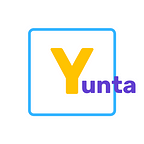Knowing the skills the company has and the ones missing, is an invaluable tool for strategic decision making.
- Companies can run a skills inventory to visualize employees’ competencies and detect skill gaps.
- Based on those gaps, design personalised training and development plans for each employee.
- Focusing on employees’ potential and talent will improve engagement and organisation’s performance.
Probably team leaders don’t need a competency map of the team they manage, however, HR, middle and top management have limited knowledge of the human capital assets the company has, and it’s an invaluable resource for strategic decision-makers to have a snapshot of all the company’s skills.
Counting with this precise information allows organisations to focus and harness employees’ potential throughout appropriate training and development, improving employee engagement and, finally, the organisation’s performance. Also, it allows diagnosing existing skill gaps in each employee, team and the organisation as a whole.
A skills map isn’t that different from a competency map, the latter also takes into account the employee’s knowledge and behaviour.
Ideally, it’s a process that should be done at scale, mapping the whole organisation and creating a competency inventory. Every worker has a particular set of competencies that makes her unique in her potential to add value to the company she works for.
What is competency mapping?
The competency mapping process identifies employees’ key competencies, skills, knowledge, abilities and behaviours. Firstly evaluating professional, personal and technical competencies of workers, and later comparing them to the desired and required skills the company determines for each job position. This contrast will detect and visualise existing skill gaps.
Competency mapping strategy will define the staff training action plan. It’s important to apply analytics to this process and visualise the staff skills and its evolution.
It becomes an indispensable weapon for any data-driven HR professional and for managing people development. Because the information gathered from competency mapping can be also used for recruitment, training and development, job evaluations, performance management and succession planning.
How to develop and implement competency mapping?
A skill or competency matrix is the tool used to report, analyse and contrast the required competencies for a position with the current skill level of the employees performing the roles within a team or organisation.
On one hand, this grid maps and identifies the available competencies of employees, stating what level of each competency they have, and on the other, it visualizes the desired and appropriate skills level the company establishes to fulfil those job positions.
Every company should create a competency mapping tailored to its specifics requirements using any suitable method to collect data about the core competencies of their workforce.
Which are the benefits for employees and employer?
Ideally, both the individuals and the organisation, are solidly benefited.
Employee:
- Gain insight into their competencies (strengths and weaknesses) to better understand themselves
- Reveal where career development efforts should aim
- Become more aware of the skills that their team needs to improve job performance and show what they can do to enhance cooperation
- Visualize skills gap, identifying the perfect starting point for learning and development opportunities
- Establish the behavioural standards of performance excellence
- Help to understand how to achieve expectations
- Learn how they can develop professional growth and to what end
Organisation:
- Help improve the organisation’s and the individual’s performance in considerable ways
- Increase awareness of existing skillsets
- Increase awareness of skills gap and align learning of employees with required skills
- Identify new leaders and provide support for succession planning
- Help promotion programs and internal mobility decisions become more accurate
- Help in performance management of employees, individual departments and overall organisation
- Increase the effectiveness of training and professional development programs
- Assist in job evaluation with clear expectations for job performance
- Develop a qualified workforce by improving recruitment and selection in a more structured, exact and objective way (recruiting people with the right skill sets)
- Provide gap analysis reports which help in all the HR processes
- Make informed decisions when it comes to defining the scope of work for existing roles and new job openings
Delineating functions, roles and required competencies will become the basis of your people strategy, driving all decisions related to recruitment, training and career advancement. And measuring it, to evaluate the possible ROI on each employee.
